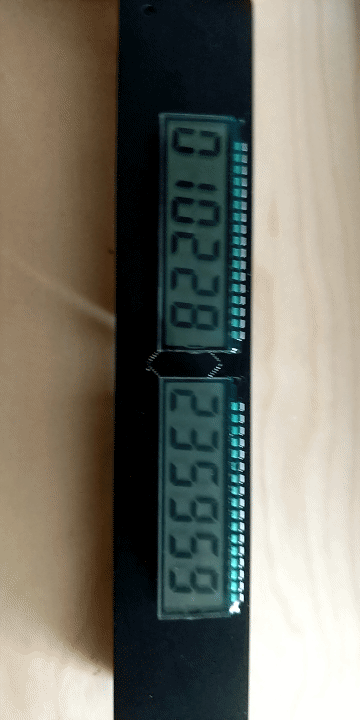A pesar de la serie engañosa en la hoja de datos, el RX8900 considera que el año "00" es un año bisiesto.
Probé esto empíricamente estableciendo la fecha en 28 de febrero de 00 y dejándola rodar para ver cómo era el día siguiente ...

Tambiénverifiquéel28defebrerode01comocontrol... 
Siestáconsiderandoestapregunta,estecódigopodríaserledeutilidad...
//ThistableofdayspermonthcamefromtheRX8900datasheetpage9staticuint8_tdaysInMonth(uint8_tm,uint8_ty){switch(m){case1:case3:case5:case7:case8:case10:case12://Interestingly,wewillneverhit12.Seewhy?return31;case4:case6:case9:case11:return30;case2:if(y%4==0){//"A leap year is set whenever the year value is a multiple of four (such as 04, 08, 12, 88, 92, or 96)."
// Empirical testing also shows that 00 is a leap year to the RX8900
// https://electronics.stackexchange.com/questions/385952/does-the-epson-rx8900-real-time-clock-count-the-year-00-as-a-leap-year
return 29 ; // "February in leap year 01, 02, 03 ... 28, 29, 01
} else {
return 28; // February in normal year 01, 02, 03 ... 28, 01, 02
}
}
__builtin_unreachable();
}
static const uint32_t rx8900_days_per_century = ( 100UL * 365 ) + 25; // 25 leap years in every RX8900 century
// Convert the y/m/d values from the RX8900 to a count of the number of days since 00/1/1
// rx8900_date_to_days( 0 , 1, 1 ) = 0
// rx8900_date_to_days( 0 , 1, 31) = 30
// rx8900_date_to_days( 0 , 2, 1 ) = 31
// rx8900_date_to_days( 1 , 1, 1 ) = 366 (00 is a leap year!)
static uint32_t rx8900_date_to_days( uint8_t c , uint8_t y , uint8_t m, uint8_t d ) {
uint32_t dayCount=0;
// Count days in centuries past
dayCount += rx8900_days_per_century * c;
// Count days in years past this century
for( uint8_t y_scan = 0; y_scan < y ; y_scan++ ) {
if ( y_scan % 4 == 0 ) {
// leap year every 4 years on RX8900
dayCount += 366UL; // 366 days per year past in leap years
} else {
dayCount += 365UL; // 365 days per year past in normal years
}
}
// Now accumulate the days in months past so far this year
for( uint8_t m_scan = 1; m_scan < m ; m_scan++ ) { // Don't count current month
dayCount += daysInMonth( m_scan , y ); // Year is needed to count leap day in feb in leap years.
}
// Now include the passed days so far this month
dayCount += (uint32_t) d-1; // 1st day of a month is 1, so if it is the 1st of the month then no days has elapsed this month yet.
return dayCount;
}


